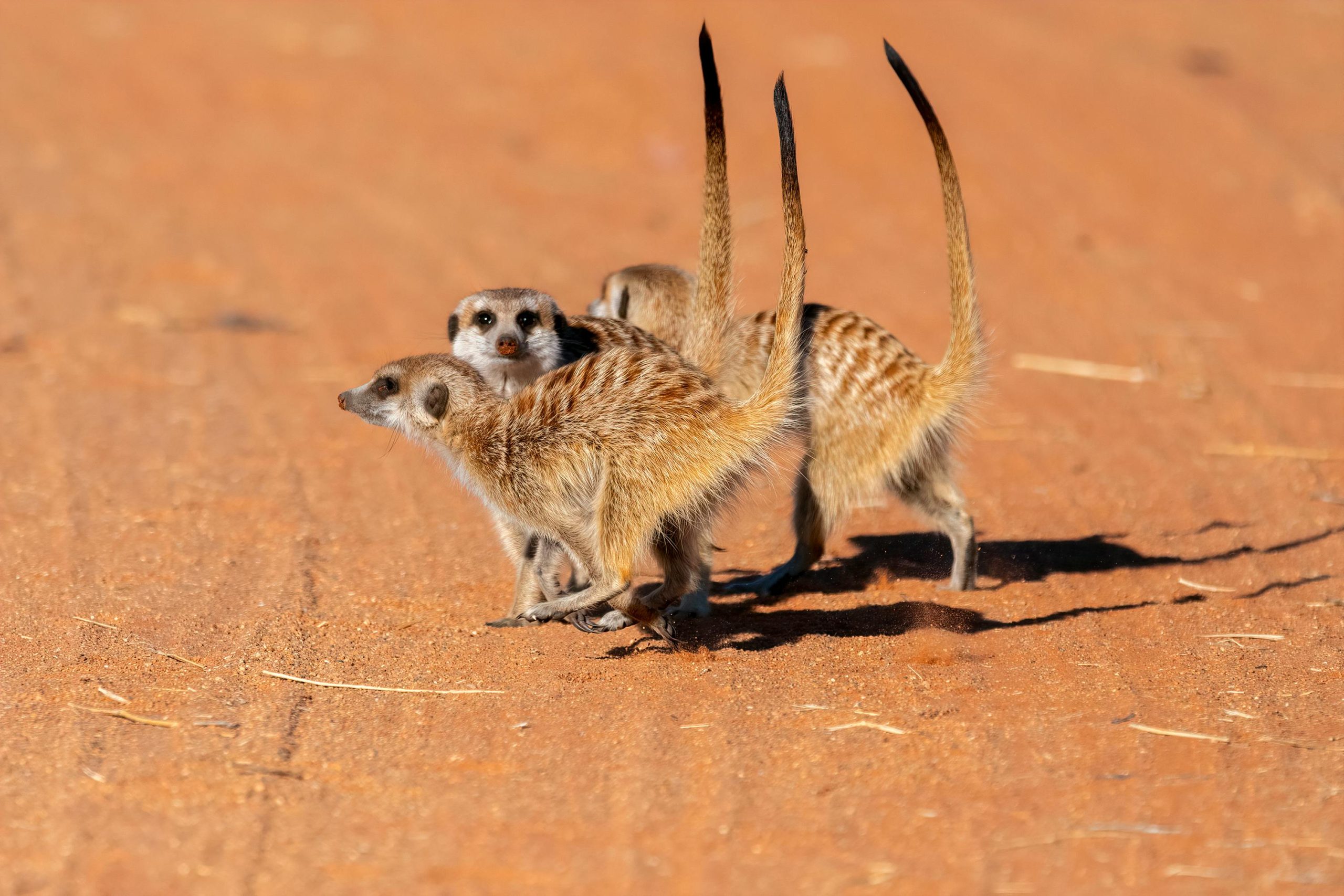Table of Contents
![]()
Introduction
Animal communication is a fascinating and intricate aspect of biology that explores how animals convey information to one another. This phenomenon encompasses a variety of signals, from vocalizations to body language, and is crucial for understanding animal behavior, social structures, and interactions. Studying animal communication not only enriches our knowledge of the animal kingdom but also has significant implications for conservation efforts and human-animal relationships.
Historical Context
Early Studies of Animal Communication
The study of animal communication has roots in ancient observations and folklore. Early humans noticed distinct sounds and behaviors among animals, often attributing meanings to them. The formal scientific exploration began in the 19th century with figures like Charles Darwin, who emphasized the evolutionary aspects of communication.
Development of Ethology
Ethology, the scientific study of animal behavior, emerged in the mid-20th century, spearheaded by researchers like Konrad Lorenz and Nikolaas Tinbergen. They developed methodologies to observe and analyze animal behavior in natural settings, laying the groundwork for modern studies of communication.
Types of Animal Communication
Vocal Communication
Vocal communication is prevalent across many species, serving various functions, such as mating calls, alarms, and territory establishment. For instance, birds are known for their complex songs, which can convey information about species identity, individual fitness, and even local environmental conditions. Whales, too, produce sophisticated calls that can travel long distances underwater, facilitating communication in vast oceans.
Visual Communication
Animals also communicate visually through body language, coloration, and physical displays. For example, the vibrant plumage of peacocks plays a significant role in mating rituals, as females often choose mates based on the quality of their displays. Dogs communicate their emotions and intentions through postures, facial expressions, and tail movements, reflecting their social status and feelings.
Chemical Communication
Chemical signals, or pheromones, are vital in many animal species for various functions, including mating and territory marking. Ants use pheromone trails to guide fellow colony members to food sources, while cats may use scent marking to establish territory. These chemical signals often provide information that is not immediately apparent through visual or auditory means.
Tactile Communication
Touch plays a crucial role in communication among many species. In primates, grooming behaviors serve both hygienic and social functions, strengthening bonds within groups. Elephants also engage in tactile communication, using their trunks to touch and reassure one another, which is vital for maintaining social cohesion.
Electrical Communication
Some species, like electric fish, communicate using electric fields they generate. This form of communication is particularly useful in murky waters where visibility is limited. Electric signals can convey information about identity, location, and reproductive status.
Mechanisms of Communication
Anatomy and Physiology
The anatomical structures involved in communication vary widely across species. Birds possess specialized vocal organs called syrinxes, enabling them to produce a range of complex sounds. Sensory organs, such as eyes and olfactory receptors, play crucial roles in interpreting signals, allowing animals to respond appropriately to various cues.
Cognitive Processes
Communication also involves cognitive processes, including learning and memory. Many species, particularly those with complex social structures, can learn new signals and adapt their communication strategies based on experiences. Understanding the context in which signals are used is essential for accurate interpretation.
Case Studies
Primates
Primate communication is particularly rich and varied. Research on chimpanzees, for example, has revealed their use of vocalizations and gestures to convey complex messages related to social hierarchies, group dynamics, and emotional states. These findings highlight the sophisticated nature of non-human communication.
Cetaceans
Cetaceans, such as dolphins and whales, demonstrate remarkable communication abilities through their varied vocalizations. These species exhibit complex social structures, and their communication patterns can indicate group cohesion and coordination. Studies have shown that different pods of orcas have distinct dialects, emphasizing the cultural aspects of their communication.
Insects
Insects offer unique insights into communication through their diverse strategies. Honeybees are known for their waggle dance, which conveys information about the distance and direction of food sources. Similarly, ants communicate through pheromone trails, coordinating foraging activities and colony organization.
Birds
Birdsong is a well-studied example of animal communication. Many birds learn their songs from parental figures, creating regional dialects that reflect cultural variations. Songs play critical roles in mate attraction and territorial defense, underscoring the evolutionary significance of vocal communication.
The Role of Communication in Social Behavior
Mating Strategies
Animal communication often plays a pivotal role in mating strategies. Courtship displays, vocalizations, and visual signals are essential for attracting mates and establishing pair bonds. The signals used in these contexts are often highly specialized, with individuals selecting mates based on specific traits that indicate genetic fitness.
Social Structure and Hierarchy
Communication is also crucial in establishing social hierarchies within groups. Dominance displays, vocalizations, and body language help to define roles and relationships among individuals, influencing group dynamics and cohesion. For instance, in wolf packs, vocalizations and physical behaviors help maintain order and facilitate cooperative hunting.
Alarm Signals
Alarm signals serve an essential function in survival, alerting group members to potential dangers. Different species employ various strategies for alarm communication, ranging from specific calls to behavioral displays. These signals can enhance group survival by enabling quick responses to threats.
Evolution of Communication
Theories on the Evolution of Communication
The evolution of communication can be understood through various theoretical frameworks, including natural and sexual selection. Natural selection favors communication strategies that enhance survival and reproductive success, while sexual selection can lead to the development of elaborate signals designed to attract mates.
Comparative Studies
Comparative studies of communication across species reveal both similarities and differences, providing insights into the evolution of communication systems. Understanding these variations can shed light on the cognitive abilities and social structures of different species, including humans.
Implications for Conservation and Animal Welfare
Understanding Animal Needs and Behaviors
Research into animal communication has profound implications for conservation efforts. By understanding the communication needs of species, conservationists can better protect habitats and ensure that social structures remain intact. For instance, preserving vocal communication channels in marine environments is critical for cetacean populations.
Human-Animal Interactions
Enhancing communication with domesticated animals is vital for improving animal welfare. Training methods that consider an animal’s natural communication styles can foster better relationships between humans and their pets. Understanding how animals communicate can also inform ethical considerations in captivity and rehabilitation efforts.
Future Directions in Research
Technological Advances
Advancements in technology, such as AI and machine learning, are revolutionizing the study of animal communication. These tools allow researchers to analyze complex vocalizations and behaviors, uncovering patterns that may have been previously overlooked. This technological evolution promises to deepen our understanding of communication across species.
Interdisciplinary Approaches
Future research will benefit from interdisciplinary collaboration, integrating insights from biology, linguistics, psychology, and neuroscience. Such approaches can enhance our understanding of communication’s role in social behavior, cognition, and the evolution of intelligence.
Conclusion
The science of animal communication reveals a complex web of interactions that are fundamental to the survival and social structures of various species. Understanding these communication systems enhances our appreciation of the natural world and underscores the importance of conservation and ethical considerations in human-animal interactions. Continued research in this field promises to unlock further mysteries, contributing to our knowledge of life on Earth and our place within it.
Share This





Be the first to comment